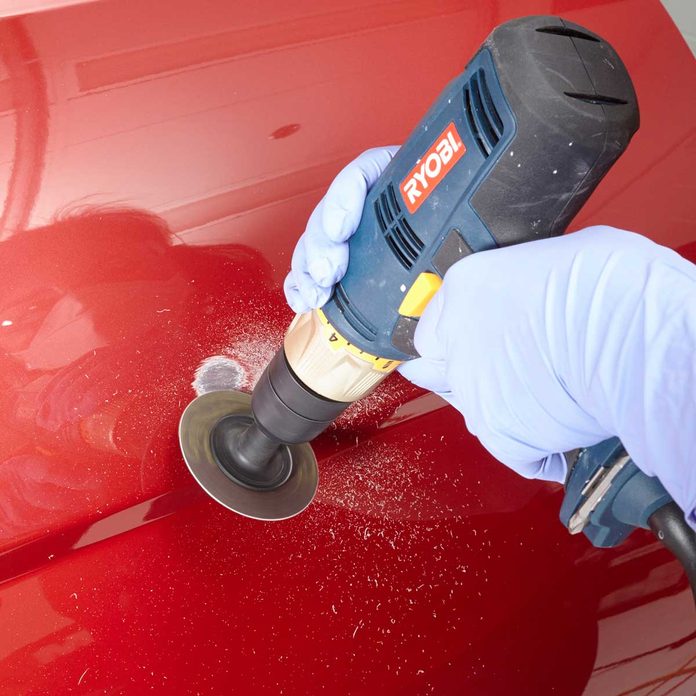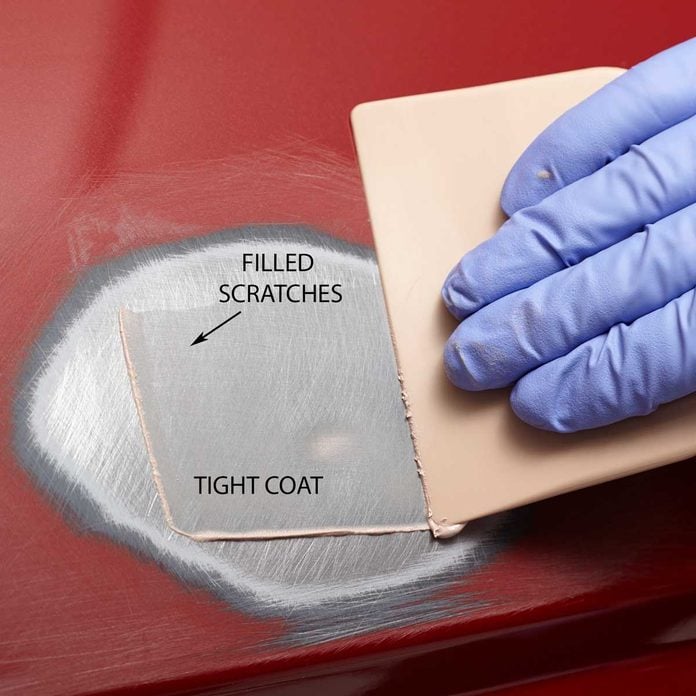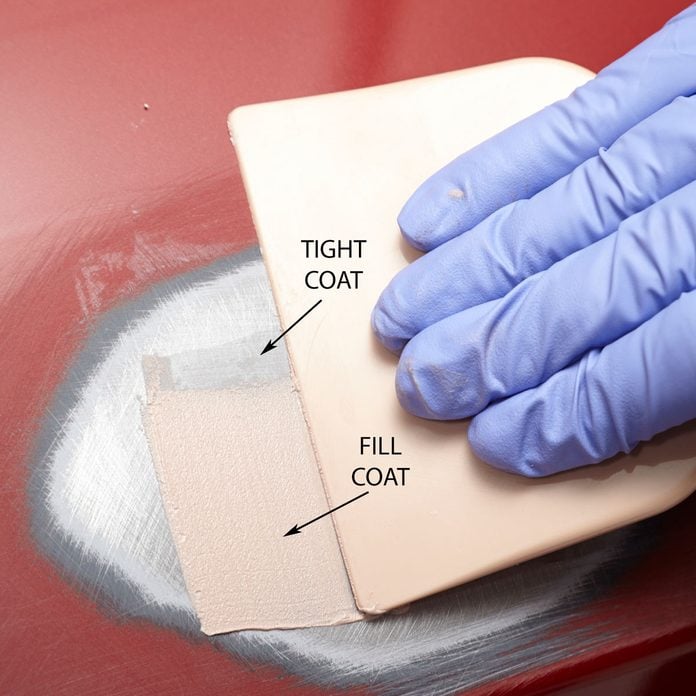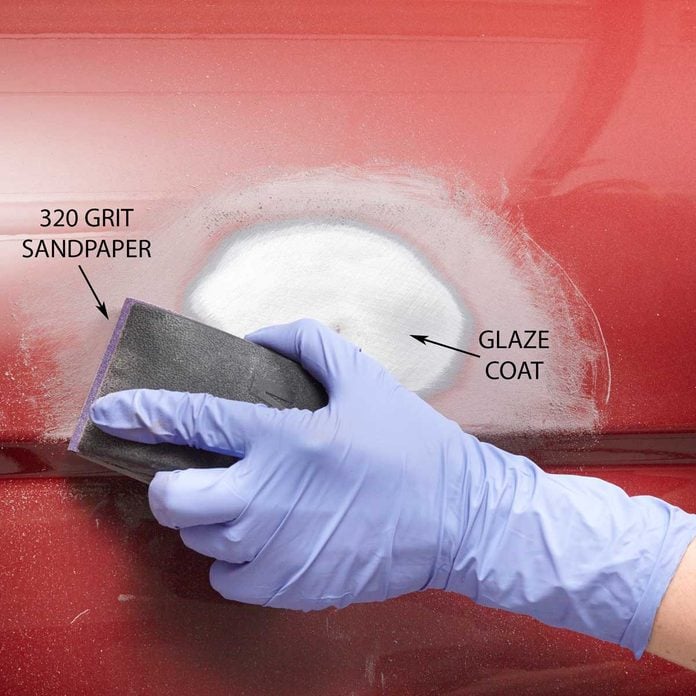What Is The Best Way To Repair Dents In A Car
Automobile Dent Repair: How to Gear up a Dent In Your Car
DIY paring repair saves hundreds of dollars
Every editorial product is independently selected, though we may be compensated or receive an affiliate commission if you buy something through our links. Ratings and prices are accurate and items are in stock as of time of publication.
Introduction
If y'all follow these steps, you can patch a car dent yourself in just an afternoon and save a few hundred bucks over body shop prices.
Tools Required
Materials Required
- Body filler
- Finishing glaze
- Latex gloves
- Sandpaper
- Tack cloth
- Wax remover
We've patched quite a few car scratches and dents in our day. We used to do information technology the same way we record drywall, by applying 5 pounds of body filler and so sanding off 4-9/10 lbs. And so we went to "boot camp" at 3M and learned there'south an easier way (as in, the right way) to do auto torso repair.
We asked practiced Jenn Melt, a senior technical service engineer at 3M, to walk you through the same machine dent repair process. Once the car dent repair is patched, y'all just spray on a primer glaze and matching paint from the dealer or an auto parts shop. The repair won't look like a professional job, but at to the lowest degree it won't stand out similar a sore thumb. Here'due south the process.
Project stride-by-stride (6)
Step 2
Remove the Paint
- Start by removing the paint within and around the paring with 24-grit paper.
- Switch to 80-dust sandpaper and paw-sand the unabridged dent.
- Employ the same sandpaper to crude up and feather the pigment effectually the edges of the paring.
- Clean the unabridged area with wax remover and a clean rag.
- And then wipe with a tack material.

Step 3
Mix the Filler
- Spread the filler downwardly the mixing board in an S-shaped bend.
- Then scoop information technology up and fold it over.
- Repeat until the filler has a consistent color.
- Don't mix body filler on a fleck piece of paper-thin. Instead, employ a mixing board or an old, clean cookie sheet you lot're willing to toss.

Step 4
Employ a "Tight" Start Coat
- Scoop upwards some filler and press it hard into the rough metal.
- Spread the filler to grade a "tight" coat. That volition burp air out of the scratches and wet the bare metal.

Pace 5
Add together More than Filler
- Wipe on a thicker "fill coat" layer of filler to completely fill up the paring.

Footstep six
Sand to Shape and Glaze
- Sand the filler to friction match the contours of the car body using 80- and 180-grit sandpaper.
- Then plumage the edges of the filler right upwards to the painted edge.
- Next, utilize finishing glaze to the entire patch and so sand with 180-grit and then 320-grit sandpaper.
- Spray the patch with primer, and then paint it.
- Use DIY car paint sealant to go on the patch looking fresh.

Originally Published: October xv, 2022
Source: https://www.familyhandyman.com/project/fix-car-dents-yourself/
Posted by: jenkinsalwask.blogspot.com


0 Response to "What Is The Best Way To Repair Dents In A Car"
Post a Comment